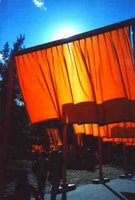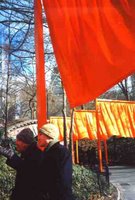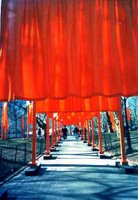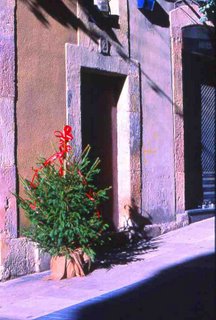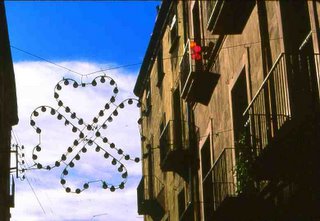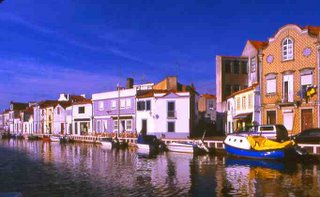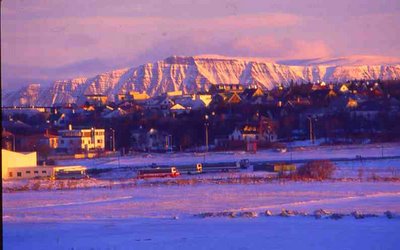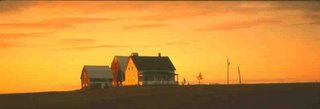
We're off to New York for a Manhattan fix. With the transit strike over – or at least in suspended animation – we can whiz around the city with our 1-Day Metro Card Fun Passes. Seven bucks gets you unlimited bus and subway travel in all five boroughs. Great deal. Armed with the card and a bus and subway map, New York is your oyster.
Oysters are on our itinerary. We’ll head to Grand Central and linger in the Oyster Bar, swallowing slippery mollusks bathed in horseradish and lemon. The seafood is great. But the setting is as big a treat. The gleaming tiled arches over your head, lit with strings of tiny white lights, are the work of 19th century builder and architect Rafael Guastavino, who emigrated to the United States from Barcelona in 1881. He’s credited with having revived an ancient Spanish tile and mortar process that yielded strong, weight-bearing, curved tile surfaces.
Guastavino’s work can be found all over New York – at the Bronx Zoo, Grant’s Tomb, Ellis Island, Carnegie Hall, the Cathedral of St. John the Divine, and at many early subway stations. If it’s curved, tiled, shiny and looks old and artisanal, it’s probably Guastavino.
Some of Guastavino’s Grand Central Terminal curves are magical “whispering corners,” arched hallways that let two people standing in opposite corners clearly hear each other’s whispers. One of these arcaded hallways is outside the Oyster Bar entrance.
From tiles to tall towers. We’ll head downtown to the Battery to visit the Skyscraper Museum near lower Broadway and Wall Street. The museum celebrates soaring steel and glass and is the first museum to open in Lower Manhattan since September 11.
Once downtown, we’ll hop on the Staten Island Ferry for the free cruise across New York harbor. The 25- minute trip affords some of the best views of the city skyline (above).
It’s an easy transfer from lower Manhattan to trains that take you under the East River to Brooklyn. We like to ride to the end of the line and walk the winter beach at Coney Island and look up at the hulking roller coaster and ferris wheel, idle until spring.
Then, back on the train to Midtown to enjoy the holiday and winter scene. We’ll take in Fifth Avenue’s store windows, especially Lord & Taylor’s. The Christmas displays are exquisite, and you move slowly along the sidewalk, taking in each window’s story and details.
And there will be skating. We’ll see the great tree at Rockefeller Center and watch the tourists on the ice rink. We enjoy the spectacle but shake our heads at the thought of shelling out $17 per adult and $12 per kid (plus $8 per head for skate rentals) to pad around in that tiny rectangle under the golden statue of Prometheus.
Instead, we’ll head to Central Park and skate at Wollman Rink, scads cheaper, much bigger, and used by New Yorkers, including pee-wee hockey teams. (If you get up at 6 a.m. and run through the park, you might see them practicing. Tiny guys in too-big helmets slapping pucks under the gaze of the grand apartment buildings lining Central Park South.)
From our hotel near Lexington and 48th, it's a short walk to one of New York's most unusual public transportation experiences, the Roosevelt Island Tram. The tram sails smack next to the lacy-beautiful Queensboro Bridge -- bring your camera for close-ups of the exquisite steel girders and pylons and buttresses -- and deposits you on Roosevelt Island in the East River, from where you have a glorious view of the United Nations Building shining aqua-blue in the sun.
There’s a chance the transit strike will kick in again while we’re in the city. If it does, I have an alternate itinerary. I drew a circle with a one-mile radius (20 Manhattan blocks equal about a mile – from 54th to 34th Street, for example) from our hotel and noted lots of things we can see on foot. There’s plenty in that circle to keep us busy.
That’s the beauty of New York. Even if the circle’s circumference were a single block, there'd be enough to fill a visit to the brim.
In fact, you don’t even need a whole block. In New York, you could fill a visit by just sitting still and letting the place swirl around you.
I won’t be blogging while we’re away, so enjoy the archives. On New Year’s Eve, have fun and be safe.
LoriHein.com


